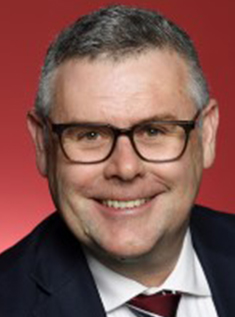 I am pleased to have the opportunity to contribute to the Australian Journal of Emergency Management; an important publication contributing to building Australia’s disaster resilience.
I am pleased to have the opportunity to contribute to the Australian Journal of Emergency Management; an important publication contributing to building Australia’s disaster resilience.
As Minister for Emergency Management, I recognise the significant challenges that Australia faces. It is broadly recognised that the scale and cost of disasters is growing, they are occurring more frequently and are having long-term and complex impacts on the economy, environment and of course, communities. For Australia to effectively prevent, manage and rebuild after disasters, an ambitious and holistic approach to reducing systemic disaster risk is required.
Following on from the First National Action Plan to implement the National Disaster Risk Reduction Framework that was released in December 2020, the Second National Action Plan is currently being developed. The plan will take a strategic, inclusive and forward-looking approach, and will be informed by comprehensive consultation. This includes discussions from last month’s From Risk to Resilience Summit on disaster risk reduction, which was a rewarding experience for me to hear the insights from leaders in this field.
Australia will need to continuously look for opportunities on how we can work most effectively across the different levels of government and with communities, businesses and other stakeholders to improve how disaster risks are reduced and resilience is built. I am particularly keen to elevate regional involvement in disaster risk reduction and to establish closer partnerships with local government authorities and communities. Genuine community engagement is needed, so I am endeavouring to go to Australia’s regions that have been most affected by disasters and learn more from local leaders.
To support local communities, a new Disaster Ready Fund will provide up to $200 million per year for infrastructure and programs that improve disaster preparedness and reduce risk. This may include flood levees, drainage improvements and evacuation centres or other, equally important initiatives focused on governance and risk accountability. Disaster recovery funding arrangements will also be streamlined to make sure they are consistent and equitable.
In building capability, it is important that we connect with international counterparts and experts. While this has been challenging over the last few years with the pandemic, it is pleasing that Brisbane will host the Asia-Pacific Ministerial Conference on Disaster Risk Reduction, which is the first regional meeting since the onset of the pandemic. This is a significant event that brings together senior representatives from the world’s disaster-prone regions to review risk reduction efforts and share information on emerging and innovative approaches.
It is timely that the Sendai Framework for Disaster Risk Reduction 2015-2030 is rapidly approaching its mid-point. The conference provides a platform for the region to reflect on progress and, importantly, for us to make commitments to achieve the 2030 vision set by the framework.
I encourage emergency management practitioners to continue working with the government on disaster risk reduction.


